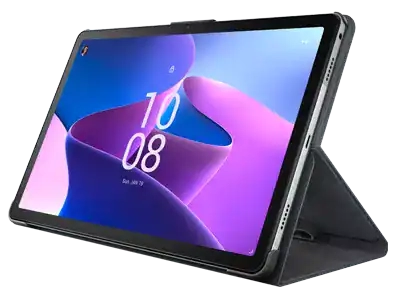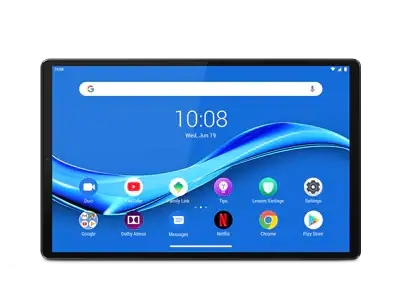What is DDR4 RAM?
DDR4 SDRAM is the abbreviation for "double data rate fourth generation synchronous dynamic random-access memory", the latest variant of memory in computing. DDR4 is able to achieve higher speed and efficiency thanks to increased transfer rates and decreased voltage. The last dynamic random-access memory update, DDR3, came out in 2007, but developers began working on DDR4 back in 2005. Samsung manufactured the first DDR4 memory console in 2011 and this technology is expected to hit the consumer market sometime in 2014. External hardware receives more hype, but this new memory technology is one example of the internal developments that enable computing advancements.
DDR4 chips are expected to support transfer rates between 2133 MT/s (million transfers per second) and 4266 MT/s. By comparison, DDR3 technology supports only up to 800 to 2133 MT/s. This significant memory transfer boost will enable hardware developers to produce DDR4 chips with more powerful processors and more capable devices. This new memory also uses less power -- 1.2 Volts compared to 1.65 Volts of DDR3 chips. This reduced power consumption should lead to better battery life in portable devices such as phones and tablets. DDR4 doesn't fundamentally change the way memory operates, but it features a new command signal to indicate the active command. The /ACT command consolidates the previous process, which demanded three separate commands when an active command is in use.
Major technology manufacturers have already started integrating DDR4 chips into their lines of products. AMD has been sampling DDR4 in its latest chip sets. Intel also announced that it would use DDR4 technology in an upcoming computing product. Consumers may not celebrate this significant advance in memory technology, but they will appreciate the performance it provides and new features it enables. Under-the-hood technology is the engine that drives computers, and DDR4 is compact piece of muscle.
What are the benefits of DDR4?
DDR4, the latest generation of RAM, offers increased speed and efficiency for computing devices. Short for "double data rate fourth generation", DDR4 is set to makes its debut on the smartphone, desktop computer, market in 2014. Developers began drawing up the plans for DDR4 in 2005, two years before its predecessor, DDR3, hit the market. This new memory chip technology boasts increased transfer speeds that will boost performance of your favorite devices. The previous generation of dynamic RAM offered speeds between 800 and 2133 MT/s (million transfers per second), but DDR4 supports speeds of between 2133 and 4266 MT/s. Along with its increased speed, DDR4 also is more efficient, using a maximum of 1.2 Volts compared to DDR3's maximum 1.65 Volts.
This cutting-edge memory is the foundation for the next-generation of devices. DDR4 enables developers to add more powerful processors to their hardware. For consumers, that means advanced computing capabilities on all platforms, whether it's a smartphone, tablet or desktop computer. DDR4 also will enable hardware manufacturers to boost the battery life on their mobile devices, a major concern for millions of smartphone users. Consumers might not celebrate this internal hardware development, but we rely on it to run the systems and applications we love.
What is the difference between DDR2, DDR3 and DDR4?
As external computing hardware components get more powerful, so do the internal components that drive our favorite devices. DDR4 RAM, which is short for "double data rate fourth generation random access memory", is the latest internal computing update engineered to boost performance. This memory upgrade promises faster, more efficient performance. DDR4 technology has two predecessors, DDR3 and DDR2. The latest edition of this dynamic memory continues its tradition, enabling hardware providers to add high-performance computing functions to devices of all shapes and sizes.
DDR4 generates speeds between 2133 and 4266 MT/s (million transfers per second). Compare that to DDR3's speeds from 800 to 2133 MT/s and DDR2's speeds from 400 to 1066 MT/s, and it's easy to see how far memory technology has come. Dynamic RAM has also become more efficient over the years. DDR2 operated on 1.8 volts. DDR3 lowered that 1.5 Volts, and now, DDR4 operates on as few as 1.05 Volts. Consumers will notice this change in the form of increased battery life for laptops, tablets and smartphones. Major hardware makers have started integrating DDR4 memory into their 2014 devices. Users may not recognize why, but they'll experience a performance boost in 2014 due in large part to this internal advancement.
When will DDR4 be available?
The next generation of dynamic RAM, DDR4, is set to boost speeds and increase battery life. Short for double rate fourth generation RAM, DDR4 has been in development since 2005, two years before its predecessor, DDR3, was released. The latest installment of dynamic RAM supports speeds of 2133 to 4266 MT/s (million transfers per second). That's a significant jump from DDR3, which support speeds between 800 and 2133 MT/s. DDR4 is also more efficient, operating on 1.05 Volts compared to DDR3's 1.5 Volts.
Consumers can expect DDR4 to slowly make its way into their devices in 2014. Desktop and mobile devices are set to hit store shelves in the next year will be powered by this increased type of memory. Two major manufacturers that provide memory chips to a number of prominent computer makers are getting on board with DDR4, so consumers should see DDR4 technology in action sometime in the second half of 2014. In practice, this dynamic RAM update will enable more advanced features. Developers also will be able to include functions and features that, until now, technology had been holding back. Consumers often celebrate voice control, touch capabilities and high-resolution pictures, but dynamic RAM technology enables those advancements. DDR4 is the foundation for future computing breakthroughs.







































